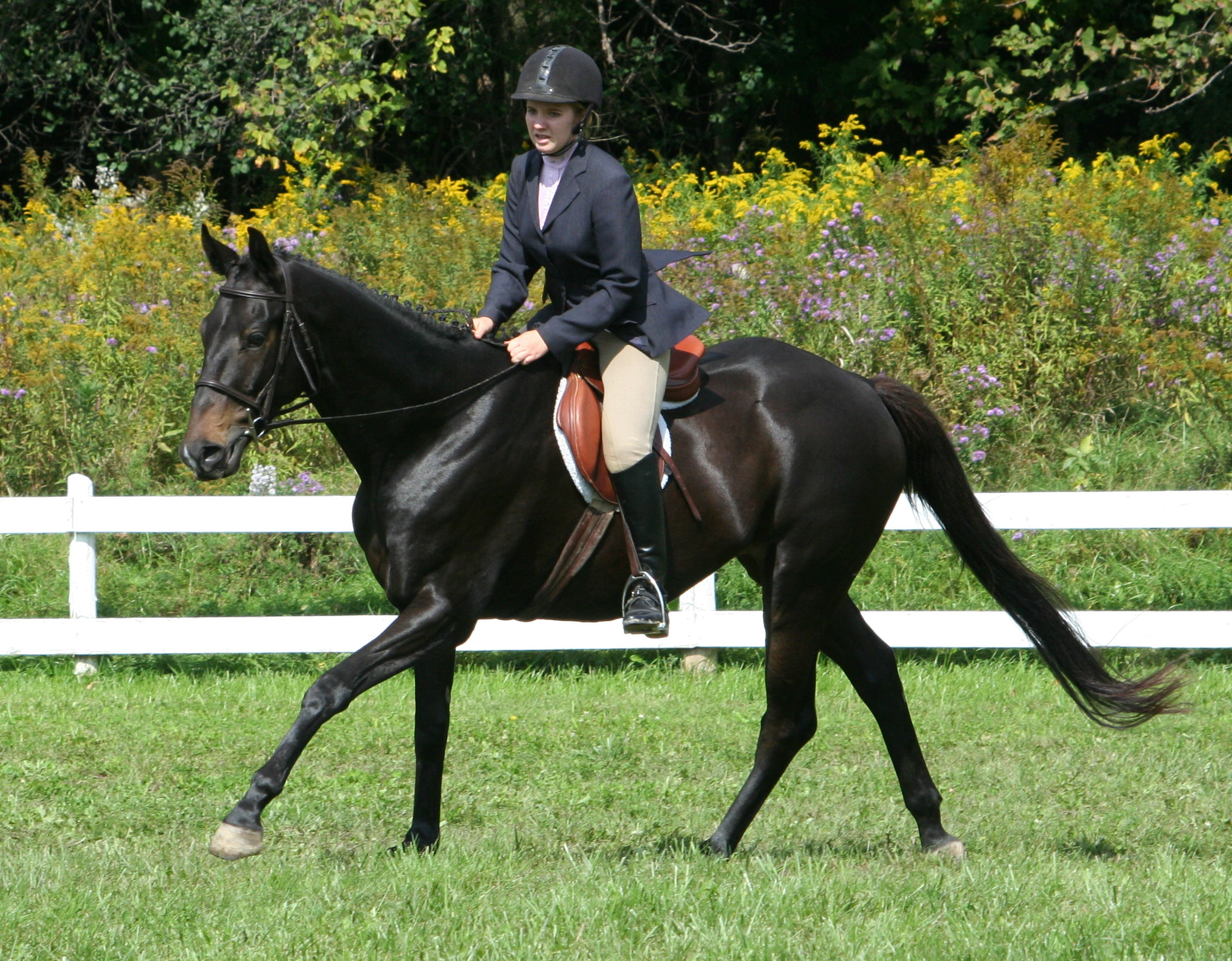
By Lindsey Partridge
In this article I will help you learn how to teach a horse how to canter, and will use my examples from when I was teaching a horse named Merlin.
 With Merlin I realized fairly quickly that he doesn't have a lot of 'go'. He is the type of horse that needs a bit of encouragement to get moving. This can be a really nice thing for having a laid back and quiet horse, but it makes it more challenging when teaching a horse how to canter.
With Merlin I realized fairly quickly that he doesn't have a lot of 'go'. He is the type of horse that needs a bit of encouragement to get moving. This can be a really nice thing for having a laid back and quiet horse, but it makes it more challenging when teaching a horse how to canter.
I started his canter work in the round pen. We practiced transitions on the ground, with no rider, and making sure he understood a 'kiss noise' meant canter. Once he was responding to the kiss noise really well, I tried in the saddle.
It took a couple times but he picked up the canter in both directions, but only on the left lead. Every time he cantered I gave him praise, and I didn't ask him to canter for more than a few strides. This is because we were really trying to get a responsive transition - so I didn't want Merlin thinking that if he cantered, he would be made to do a lot of work.
After some more training sessions in the round pen, we moved into our riding arena. This gave Merlin more space to canter which can really help a pokey horse because its more fun to canter in a larger space.
We continued to work on our canter, and were finally able to pick up our right lead. I have to bend his neck fairly precisely and then he will pick up the right lead... otherwise he always gets the left.
Once he was understanding the transition, it was time to get him doing some longer canters. This can be a tricky thing to teach a pokey horse. If you are too rough with a pokey horse you can provoke them to buck or get sour.
I decided to use the buddy method. This is where the pokey horse gets to follow another experienced horse around the ring. I decided to do this with Riddler because Riddler has a very steady and reliable canter - it is a good one teach a horse to follow, but also Riddler doesn't mind if a horse gets too close to him. Riddler has never threatened to kick at another horse while being ridden.
So Erin headed out with Riddler at a canter, and I followed with Merlin. Merlin picked up his canter much more easily and he really enjoyed following Riddler. He maintained his canter with minimal effort from my part and we did 2 whole laps around the ring. We finished with a ton of praise.
After some praise we did some more canter both ways. Now that Merlin understands canter I can be more specific and I correct him if he gets the wrong lead.
The buddy system is a great way to motivate a slow horse - however, you have to be careful because sometimes following another horse can get a horse excited. The round pen is usually the best place to teach canter because the horse can follow the rail easily, but also the space isn't too large so the horse can't get going to fast if they get excited.
When first teaching a horse to canter you don't want to be too picky about speed or canter lead because the horse doesn't understand - and if you keep trying to correct what they don't understand, then the horse will get frustrated and lose confidence.







